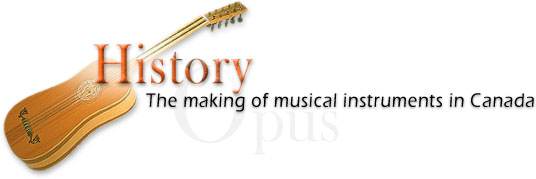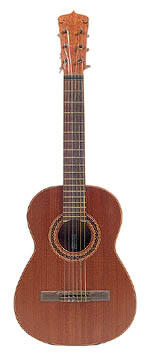
| Opus 23 - Classical Guitar |
|
|
During Torres's lifetime, the guitar began to acquire status as a solo instrument, and the great guitarist Tárrega (1852-1909) paved the way for the modern school of classical guitar. Spurred on by the instrument's growing popularity, Torres built larger guitars and continued to experiment with internal bracing, which gave his instruments a much more robust tone. The guitar presented here is similar to the flamenco guitar. It is three-quarters the size of a modern classical guitar, like the scaled-down stringed instruments often used by students. Jim Cameron learned to play the guitar in Ottawa and Vancouver. Given his experience in cabinetmaking, he decided one day to construct his own instrument. Encouraged by the results, he went on to build other guitars and, in 1970, opened his workshop in Osgoode, Ontario, where he spent his time crafting stringed instruments. |
 |


